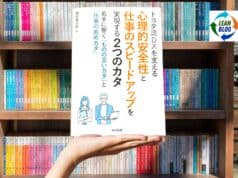Mark's note: Jim's post originally started as a comment in response to my post “Where Did I Start with Lean?” but it exceeded the size limit for a comment, I believe. So I'm posting it here:
By Jim Baran
This is an interesting topic. Lean lineage is one of the first diagnostics we explore with lean leadership achievers.
For those that don't know about Value Stream Leadership (there may be some still around), we recruit lean leaders for companies in need of lean direction (and serious attitude changes). We don't use the term “candidate” since the majority of folks we work with are not actively looking for a new job. They will achieve with our without me or our clients.
I was first introduced to “lean” in the early 80's while chasing a human resource career at Volkswagen of America. I remember listening to a Toyota executive who was invited to speak at our Pennsylvania plant about “Japanese Style Management”. Then and now, my reference to lean is the Toyota Production System and its sister Toyota Product Development System. In our world, there is no lean/sigma. 6Sigma is a fine tool.
VW was the first transplant auto manufacturing company to build a plant in the USA (also the first one to exit). Back then, my auto mentors taught me that …there is always something to see, to learn, to do, and to hide. I recall listening to this very polite Toyota speaker and wondering, what's he hiding? Nobody solves problems in the open. Such vital work is why conference rooms and doors were invented and why we depend so much on annual performance appraisals.
By contemporary standards, VW wasn't a “lean” company. However, VW had the “Respect-for-People” culture nailed and I would put theirs up against any self proclaimed lean company today.
Everything I've learned about working with people today came from VW. In my early days in the “staffing and recruiting” mosh pit at VW, our HR VP (now deceased) introduced himself as “Bill”. Bill said in one sentence something I wish every senior executive today would accept as true. Bill said, “Jim, treat everyone that walks through this door as a future customer of our product”. Yes, even those who were rejected for jobs. Such later came to be known as Recruitment Fahrvergnügen.
Fast forward many years. My lean education is ass-backwards. I've learned how lean is correctly implemented by many, many lean achievers who have helpfully and tolerantly taught me how NOT to introduce and implement lean.
I have an interesting seat in the lean game. I stand in the base coaches' box between third base (achiever) and home plate (Client Company). Many strange things happen. Many signals are exchanged. Sometimes the score is tied, other times one or the other is behind. Sometimes the fans throw things.
Through the years, I have been thoroughly coached by an inner circle of lean achievers who have provided me with lean leadership lessons I've not read in books, blogs, or read on job descriptions (I hate job descriptions- useless). Someday soon, I will share most of these.
The three top lessons, however, are translated in how our business is run and our work gets done.
1. Go to Gemba: I've worked multiple search assignments with the same company. Each new search, we go back. Wax-on, Wax-off.
2. What they think is the problem is never the problem. Get to what they are hiding (ok, some of my mentors came from the auto industry).
My favorite example of this is an IMPO interview with Art Smalley, a former Toyota manager and a current member of the LEI faculty. Art answered the article authors interview question: How can manufacturers get their employees on-board with lean manufacturing, when sometimes these principles can result in a need for fewer personnel? To explain, Art mentioned an interesting account of Hajime Ohba, the retired head of the Toyota Supplier Support Center, “was once asked about this type of problem by a company president – after some extensive improvement had occurred. Mr. Ohba replied with something along the lines of; “You have a sales problem now, not a manufacturing problem. I'd get busy fixing that if I were you”. You can read the full interview with Art here: http://shrinkurl.com/fe131
Finally, my favorite and what our business try's to accomplish everyday:
3. The seeds of lean are always there, somewhere, go find and raise them as you would your own children.
This post is my “hidden” way of saying thank you to all the lean leadership achievers who have taken me under their wing. I'm sure they felt that if they can teach me a few things, anything is possible. Thank you lean achievers!
Jim Baran
Owner, Value Stream Leadership
What do you think? Please scroll down (or click) to post a comment. Or please share the post with your thoughts on LinkedIn – and follow me or connect with me there.
Did you like this post? Make sure you don't miss a post or podcast — Subscribe to get notified about posts via email daily or weekly.
Check out my latest book, The Mistakes That Make Us: Cultivating a Culture of Learning and Innovation:










Jim or Mark:
What does "wax-on, wax-off" mean?
You lost me there, briefly!
Wax-On, Wax-Off Defined:
The lesson of wax-on, wax-off from Mr. Miyagi in the Karate Kid (1984). The kid (Daniel) was enthusiastic about learning karate. He had a specific image of a karate masters mission and purpose. Unfortunately, Daniel became disillusioned when Mr. Miyagi instructed him to practice e routine house chores. Performing meaningless house chores conflicted with Daniels “master” image. His enthusiasm decreased when the one who was supposed to be his karate teacher assigned him unadventurous house chores instead of teaching him the extraordinary schemes and moves he was expecting. After the chores were completed and he finally got to the point of being taught, Daniel discovered that the lessons were easier and that most of the moves he was being taught were actually the same moves he repeated during the chores. Reflecting on what “wax-on – wax-off” teaches us is this: People can be enthusiastic about their future plans, but they should not start the path of their plans with inflexible ideas. They should first take some time off to reflect on their natural world, inner strength, and what simplicity can teach us. They should understand that there's a lesson in every element. And most of all, they should understand that little things can build the path to success. Daniel learned to become more aware of the value and significance of details and understand that little and seemingly insignificant things are the bricks of achievement. For there's a lesson in every brick.
Also, we occasionally use wax-on, wax-off term with a lean achiever whose resume reads like Taichi Ohno’s diary. If you can take a lean method and related it simply, you only need the words that describe the action(s), not its origin.
Jim Baran
Owner, VSL
Here is a video of the scene Jim was referring to:
YouTube Link
Thanks – good to see you guys are up early and working on Saturday!
I never watched the movie, but practiced aikido for years, so it is a familiar lesson.
I always hesitate to "orientalize" lean because it scares some people away, but really the "wax-on, wax-off" story goes way back: The student asked the zen master "How do I achieve enlightenment?" The answer: "Chop wood, carry water".
-ALB